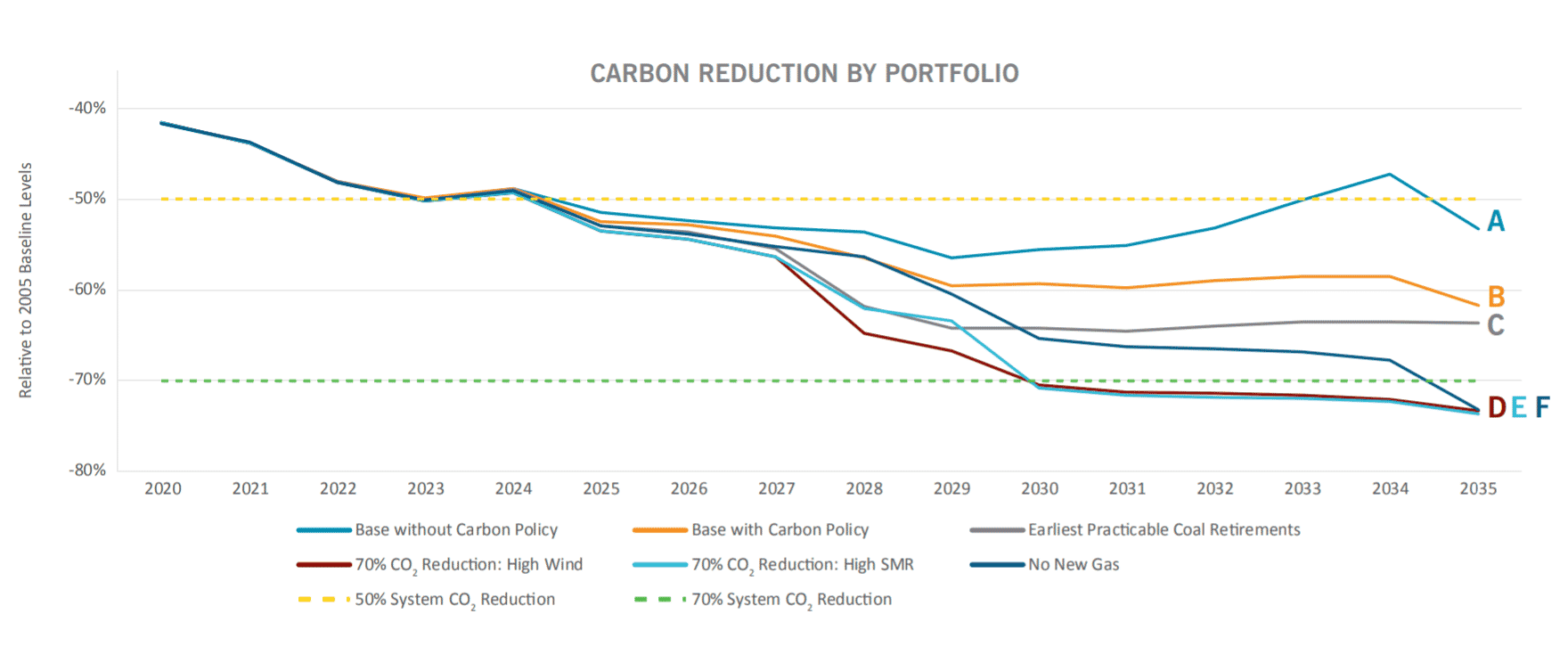Duke Energy’s 15-Year Resource Plan for Carolinas Examines Options to Accelerate Coal Plant Retirements

Duke Energy Carolinas LLC and Duke Energy Progress LLC on Sept. 1 unveiled their 15-year integrated resource plans for the Carolinas, presenting a range of scenarios with accelerated coal retirement options and substantial increases in solar, wind, and energy storage technologies. The proposal details six generation portfolios that would keep Duke Energy Corp. on a trajectory to reach its goal of 50 percent carbon reduction by 2030 and net-zero emissions by 2050. Duke Energy noted that it is the first time that its resource plan includes both onshore and offshore wind as viable resource alternatives in most portfolios. In the base-case scenarios, all units that operate exclusively on coal would be retired by 2030. The proposal calls for substantial investment in solar generation, adding two to four times the current capacity over the 15-year planning horizon.
The six energy planning scenarios are based on different assumptions for coal plant retirement dates along with a diverse array of demand and supply-side resource requirements. In the two base cases – with and without carbon policy – all units that operate exclusively on coal would be closed by 2030, leaving only dual-fuel units to operate primarily on natural gas. By 2035, about 7 gigawatts of coal-units representing 17 percent of nameplate capacity across their system would retire.
Two of the scenarios meet North Carolina’s goal of 70 percent emissions reduction by 2030. Duke Energy is involved in North Carolina’s Clean Energy Plan stakeholder process, evaluating policy pathways to achieve a 70 percent reduction in greenhouse gas emissions from 2005 levels by 2030 and carbon neutrality for the electric power sector by 2050.
Among the portfolio options:
- The high wind scenario would add 16,250 megawatts of solar, 5,500 megawatts of wind, 4,400 megawatts of storage, 6,400 megawatts of gas and 3,350 megawatts of energy efficiency and demand response.
- The high SMR scenario proposes to add 16,250 megawatts of solar, 3,100 megawatts of wind, 1,350 megawatts of small modular reactors, 4,400 megawatts of storage, 6,100 megawatts of gas, and 3,350 megawatts of energy efficiency and demand response.
- The no-gas scenario, which would attain over 70 percent emission cuts by 2035, envisions adding 7,400 megawatts of storage capacity, 3,350 megawatts of demand response and energy efficiency, 700 megawatts of small modular reactors, 5,800 megawatts of wind and 16,400 megawatts of solar power, and retaining 2,200 megawatts of coal online through 2035.
With regulated service territories in both North Carolina and South Carolina, the Duke Energy utilities present one integrated resource plan addressing the individual considerations of both jurisdictions.
EnerKnol Pulses like this one are powered by the EnerKnol Platform—the first comprehensive database for real-time energy policy tracking. Sign up for a free trial below for access to key regulatory data and deep industry insights across the energy spectrum.
ACCESS FREE TRIAL